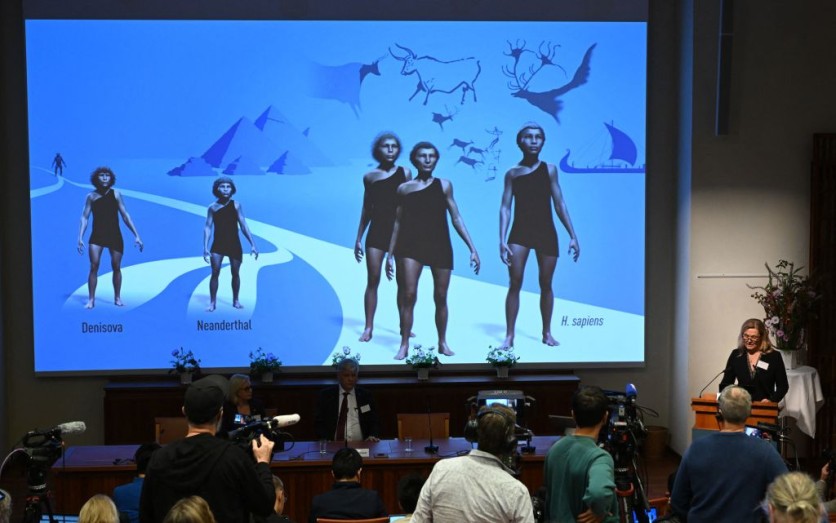A new study reveals that Neanderthals, our closest ancestors, possessed the ability to perceive and produce human speech. The finding marks a significant breakthrough in understanding language evolution and challenges long-standing questions about Neanderthals' linguistic capacities.
Binghamton University anthropology professor Rolf Quam expressed the importance of the study, saying, "This is one of the most important studies I have been involved in during my career. The results are solid and clearly show the Neanderthals had the capacity to perceive and produce human speech."
"This is one of the very few current, ongoing research lines relying on fossil evidence to study the evolution of language, a notoriously tricky subject in anthropology," he added.

3D Models of Neanderthals
For decades, the presence of spoken language in any other human ancestor species, especially Neanderthals, has been a central question in human evolutionary studies, according to Juan Luis Arsuaga, co-author and professor of Paleontology at the Universidad Complutense de Madrid.
The researchers reconstructed how Neanderthals heard by using high-resolution CT scans to create virtual 3D models of ear structures in Homo sapiens, Neanderthals, and earlier fossils representing Neanderthal ancestors from the Atapuerca site.
These models were then input into a software-based auditory bioengineering model to estimate hearing abilities up to 5 kHz, encompassing most of the frequency range of modern human speech sounds.
The results showed that Neanderthals had slightly better hearing between 4-5 kHz compared to their ancestors, resembling modern humans more closely, according to the research team.
The study also calculated the frequency range of maximum sensitivity, known as occupied bandwidth, in each species. The Neanderthals exhibited a wider bandwidth than their ancestors, aligning more closely with modern humans.
Mercedes Conde-Valverde, lead author and professor at the Universidad de Alcalá in Spain, has emphasized that this wider bandwidth suggests Neanderthals possessed a communication system as complex and efficient as modern human speech.
Quam has pointed out an interesting aspect of the study: the suggestion that Neanderthal speech likely included an increased use of consonants. Previous studies had focused on their ability to produce vowels, but the emphasis on consonants aligns with human speech patterns and sets Neanderthals apart from other primates.
Modern Human Speech
The results underscore that Neanderthals possessed a comparable ability to generate human speech sounds, their ears finely tuned to perceive these frequencies.
This development in auditory capabilities aligns with archaeological findings indicating a progression in intricate behaviors, such as advancements in stone tool technology, the domestication of fire, and potential engagement in symbolic practices.
The research offers compelling evidence that reinforces the concept of a coevolutionary process involving sophisticated behaviors and improved vocal communication across the course of human evolution.
The team, working on this research line for nearly two decades, aims to extend the analyses to additional fossil species in ongoing collaborations. The results offer valuable insights into Neanderthal speech capacities, marking a pivotal moment in understanding our ancestors' communication abilities.
The study's findings were published in Nature Ecology and Evolution.

![Apple Watch Series 10 [GPS 42mm]](https://d.techtimes.com/en/full/453899/apple-watch-series-10-gps-42mm.jpg?w=184&h=103&f=9fb3c2ea2db928c663d1d2eadbcb3e52)



